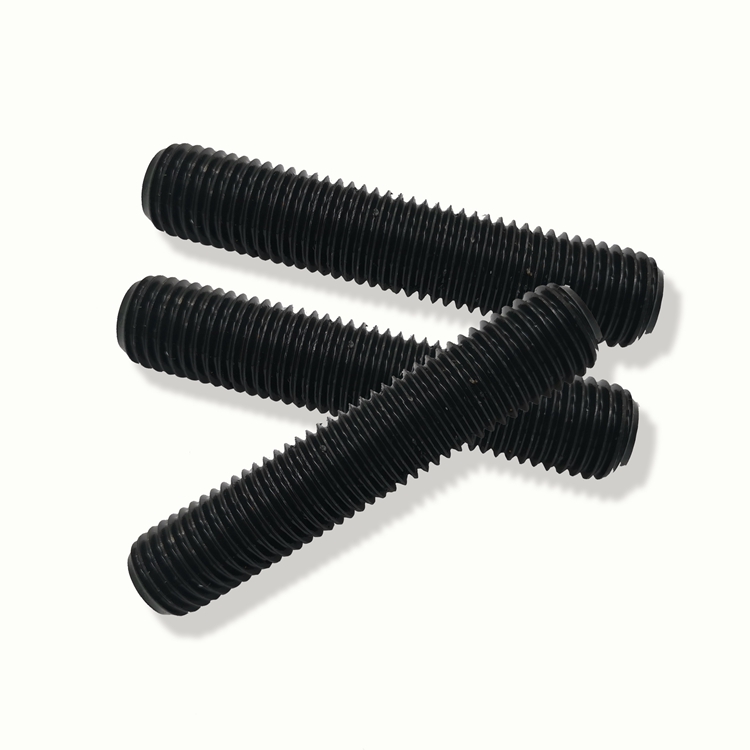hexagon socket head bolts factory
Dec . 04, 2024 09:03 Back to list
hexagon socket head bolts factory
Hexagon Socket Head Bolts A Comprehensive Look at the Manufacturing Process
Hexagon socket head bolts, often referred to as Allen bolts, are vital components in various mechanical assemblies, providing a secure fasten due to their unique design. Understanding the manufacturing process of these bolts is essential for appreciating their significance in industries ranging from automotive to construction.
What Are Hexagon Socket Head Bolts?
Before delving into the manufacturing process, it is crucial to understand what hexagon socket head bolts are. These are fasteners with a hexagonal recess in their head, which allows for the use of an Allen wrench or hex key for tightening and loosening. This design not only enhances grip but also allows for efficient torque application without the need for extensive open-space access, making it an ideal choice for confined spaces.
The Manufacturing Process
1. Raw Material Selection The first step in manufacturing hexagon socket head bolts is selecting the appropriate raw materials. High-quality steel, often alloyed with carbon, is the most commonly used material due to its strength and durability. Depending on the application, manufacturers might also use stainless steel, titanium, or other specialized materials to resist corrosion and wear.
2. Cold Heading The selected raw materials, typically in the form of wire rods, undergo a cold heading process. Cold heading involves deforming the metal at room temperature into the basic shape of the bolt head and shank. This process helps in improving the physical properties of the material due to strain hardening, which increases its strength.
hexagon socket head bolts factory

3. Thread Rolling Once the head and shank have been shaped, the bolts move on to the thread rolling stage. This method imparts the necessary helical threads onto the shank of the bolt. Unlike traditional cutting methods, thread rolling is a cold-forming process that preserves the metal’s grain structure and enhances strength. The result is a bolt with precision threads and a smooth finish that facilitates easy installation.
4. Heat Treatment Following thread rolling, the bolts often undergo heat treatment to further enhance their mechanical properties. This process typically involves heating the bolts to a high temperature followed by rapid cooling. Heat treatment not only increases hardness but also improves fatigue resistance, making the bolts suitable for high-stress applications.
5. Surface Finishing The next step is surface finishing. Depending on the application, manufacturers may apply various coatings to the bolts. Common treatments include zinc plating, black oxide, and passivation for stainless steels. These coatings serve to protect against corrosion and wear, ensuring the longevity of the bolts even in harsh environments.
6. Quality Control Quality control is a critical phase in the manufacturing process. Each batch of bolts is subjected to rigorous testing to ensure they meet industry standards and specifications. Tests may include strength testing, corrosion resistance evaluations, and dimensional inspections. Only those that meet the strict quality criteria proceed to packaging.
7. Packaging and Distribution Finally, the bolts are packaged for distribution. Manufacturers often provide them in bulk or in smaller retail packages, depending on market demands. Proper packaging is essential to protect the bolts from damage during transportation and handling.
Conclusion
Hexagon socket head bolts play an indispensable role in a multitude of applications, offering efficiency, strength, and versatility. The intricacies of the manufacturing process—from raw material selection to final quality control—highlight the engineering excellence involved in producing these essential fasteners. As industries continue to evolve, the demand for high-quality hexagon socket head bolts will remain strong, driven by the need for reliable and durable fastening solutions. Understanding this process not only helps in choosing the right fasteners but also fosters an appreciation for the precision and craftsmanship involved in their production.
Latest news
-
High-Quality Panel Stud Bolt Reliable Panel Stud Bolt Factory & Suppliers
NewsJul.08,2025
-
High-Precision Fine Thread Locknuts Manufacturer & Supplier Custom Solutions
NewsJul.08,2025
-
PH Imperial Stud Bolt – High Strength Fasteners from Leading Supplier & Factory
NewsJul.07,2025
-
High-Quality Allen Wrench Bolts Leading Factory, Company & Suppliers
NewsJul.07,2025
-
Wholesale Ball Stud Bolt - High Quality Supplier & Factory Price Reliable Wholesale Ball Stud Bolt Company
NewsJul.06,2025
-
High-Strength Alloy Bolts Manufacturer & Supplier Quality Alloy Fasteners Factory
NewsJul.06,2025
